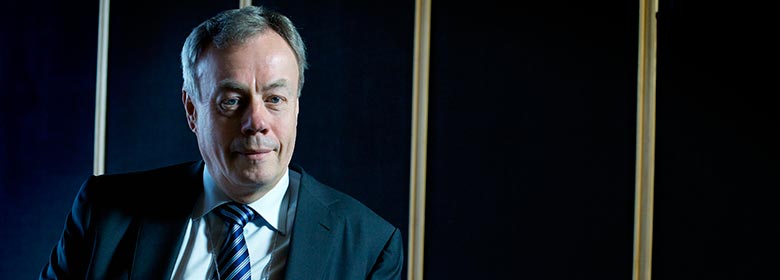From managing director
Year 2014 was the last one for Helsingin Energia operating as a public utility. During the year, in addition to our normal operations, we prepared for the incorporation and the transfer of business operations to Helen Ltd.
From the economic point of view, year 2014 panned out as predicted. The warmer than average year had an impact on the Group’s turnover, which was slightly lower than in the previous year. Correspondingly, total costs were down due to the falling fuel costs. The ratio of operating profit to return on equity remained at the previous years’ level.

INVESTING IN RENEWABLE ENERGY
The Group’s investments complied with the investment programme. During the year, we carried on the implementation of the development programme ‘Towards a carbon neutral future’ and the preparation of investments required by the related EU Industrial Emissions Directive. Other investments were connected to normal production, distribution and district heat operations and to the expansion and refurbishment of the tunnel and district cooling network.
We signed a contract with Vapo on the delivery of wood pellets to the Salmisaari and Hanasaari combined heat and power plants. The delivery amounts are substantial on the Finnish scale. Pellet combustion requires considerable investments in the fuel systems and storage at the power plants. At Salmisaari, this work has now been completed, and continuous pellet combustion started there in early 2014. At Hanasaari, the pellet system is being built, and preparations are made for the start of pellet combustion in late 2015.
In future, solar energy will be utilised to an increasing extent in both electricity and heat production. The construction of Finland’s largest solar power plant in Suvilahti in central Helsinki started in late 2014. The operation of the power plant is based on a new kind of communality. Customers can acquire their own personal panel at the power plant and monitor its operation and power generation in real time. Designated panels were sold out in record time, and a second solar power plant operating on the same production principle is already is already on the drawing board.
Another record was broken in Helsinki’s district cooling in July 2014. On a hot summer’s day, a total of 800 MWh of renewable solar-powered district heat was produced with district cooling. This corresponds to the daily need for hot tap water of 250,000 residents.
The dense urban structure provides new opportunities for increased use of renewable energy, recycling of energy flows, and emissions reduction. The research project SunZEB – PlusEnergy in the City, which was launched in spring 2014, aims to create an optimal energy solution for areas connected to district heating and cooling. In addition to a building’s own energy use, the project takes into account innovative recirculation and reuse of energy in new and renovated buildings.
We were the first energy company in Finland to launch the electricity demand-side management service for enterprises. Demand-side management is currently also tested in households. With the service, companies and households can act as a nationwide electricity reserve for monetary compensation.
In future, we will focus more and more clearly on our core business operations: the production, distribution and sale of energy. In autumn 2014, we launched a study on the development of maintenance and design operations and decided to combine these business operations. The new Project and Maintenance business unit will now mainly act as an internal service provider.
Mitox Ltd, Helen Group’s subsidiary providing metering services, was sold to Empower Ltd in May 2014.
OUTLOOK 2015
The operation of Helen Ltd was launched on 1 January 2015 after the business operations of Helsingin Energia were transferred to the new limited company. The economy of the eurozone and Finland will still pose challenges for the next few years. There is significant uncertainty in forecasting the cost impacts of the functioning of the electricity market and fuel price trend.
The policies on increased use of renewable energy and the use of carbon dioxide-free and low-emission energy sources will create a great need for investment in the next few years. The impact of the development programme on the profit trend is considerably negative.
The balance sheet of Helen Ltd and the other boundary conditions of operations significantly deviate from the operating model of the old public utility of Helsingin Energia. For this reason, the key figures of Helen Ltd and Helsingin Energia are not comparable.
I would like to take this opportunity to extend my warmest thanks to our employees, customers and partners for their excellent co-operation.
Pekka Manninen